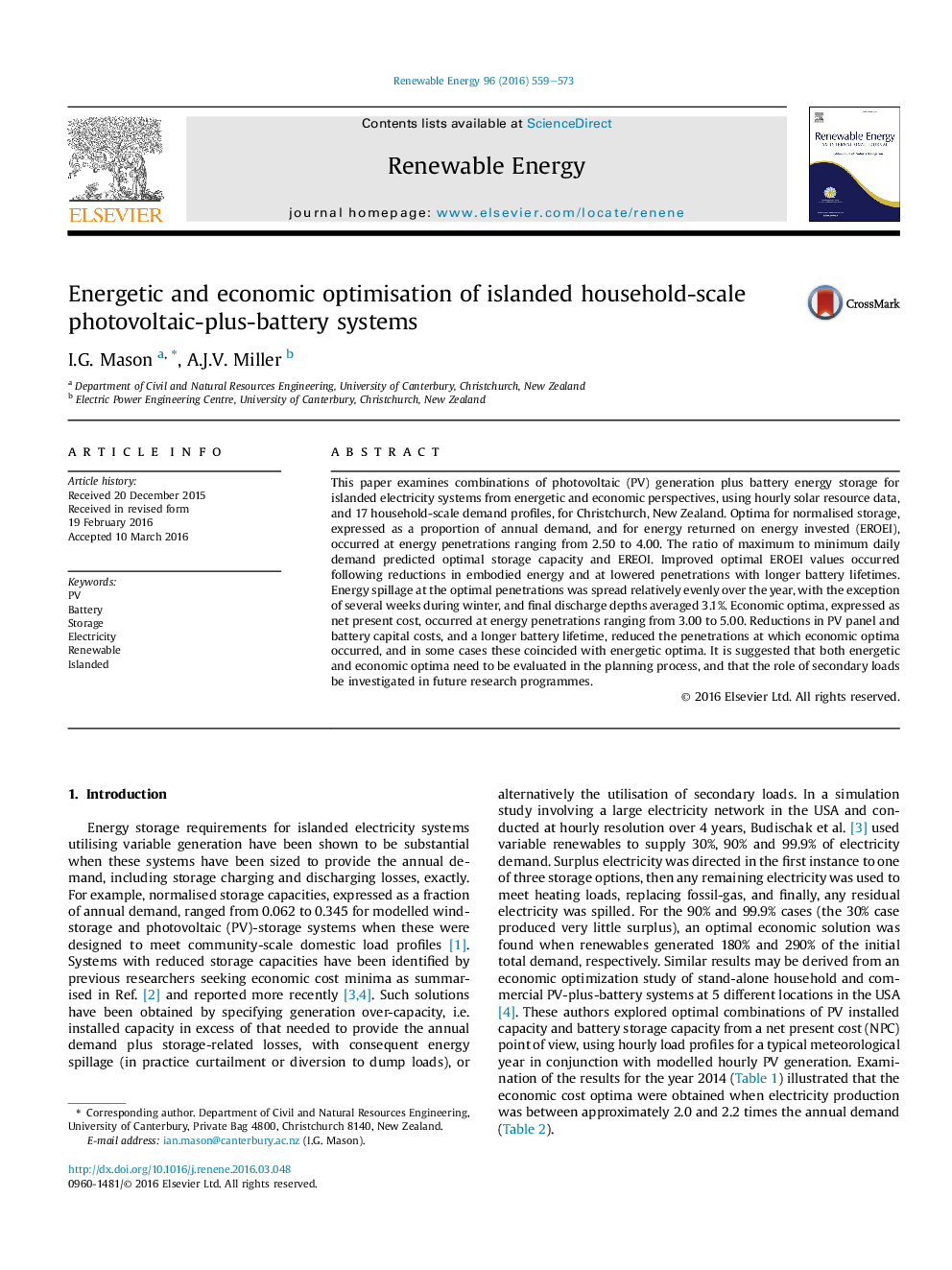| Article ID | Journal | Published Year | Pages | File Type |
|---|---|---|---|---|
| 10293898 | Renewable Energy | 2016 | 15 Pages |
Abstract
This paper examines combinations of photovoltaic (PV) generation plus battery energy storage for islanded electricity systems from energetic and economic perspectives, using hourly solar resource data, and 17 household-scale demand profiles, for Christchurch, New Zealand. Optima for normalised storage, expressed as a proportion of annual demand, and for energy returned on energy invested (EROEI), occurred at energy penetrations ranging from 2.50 to 4.00. The ratio of maximum to minimum daily demand predicted optimal storage capacity and EREOI. Improved optimal EROEI values occurred following reductions in embodied energy and at lowered penetrations with longer battery lifetimes. Energy spillage at the optimal penetrations was spread relatively evenly over the year, with the exception of several weeks during winter, and final discharge depths averaged 3.1%. Economic optima, expressed as net present cost, occurred at energy penetrations ranging from 3.00 to 5.00. Reductions in PV panel and battery capital costs, and a longer battery lifetime, reduced the penetrations at which economic optima occurred, and in some cases these coincided with energetic optima. It is suggested that both energetic and economic optima need to be evaluated in the planning process, and that the role of secondary loads be investigated in future research programmes.
Keywords
Related Topics
Physical Sciences and Engineering
Energy
Renewable Energy, Sustainability and the Environment
Authors
I.G. Mason, A.J.V. Miller,
